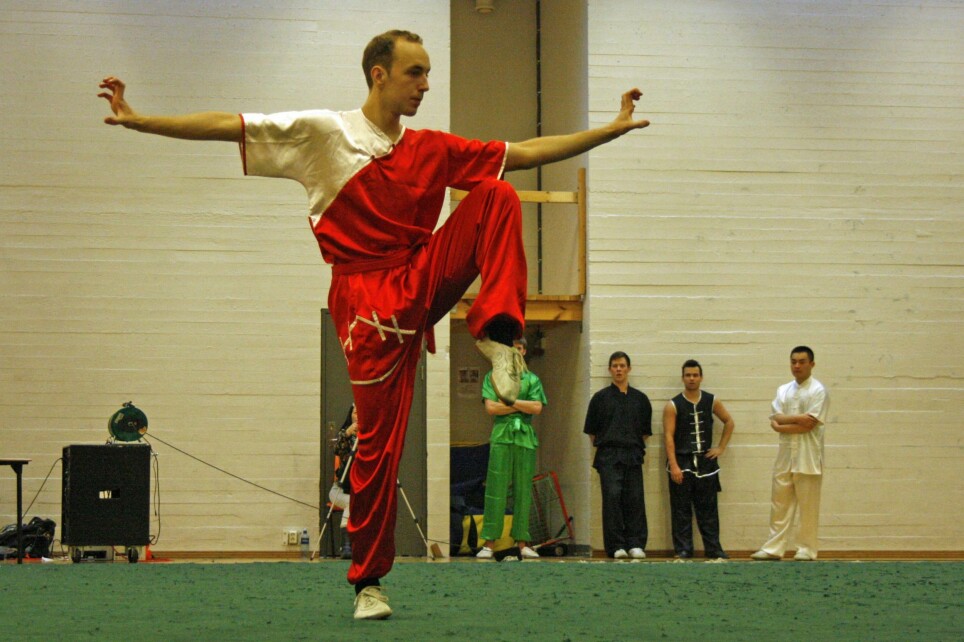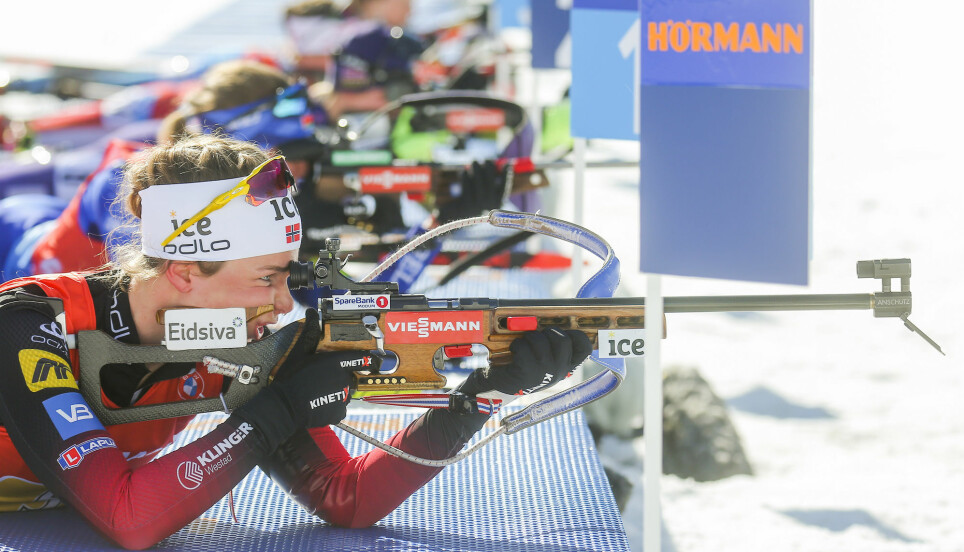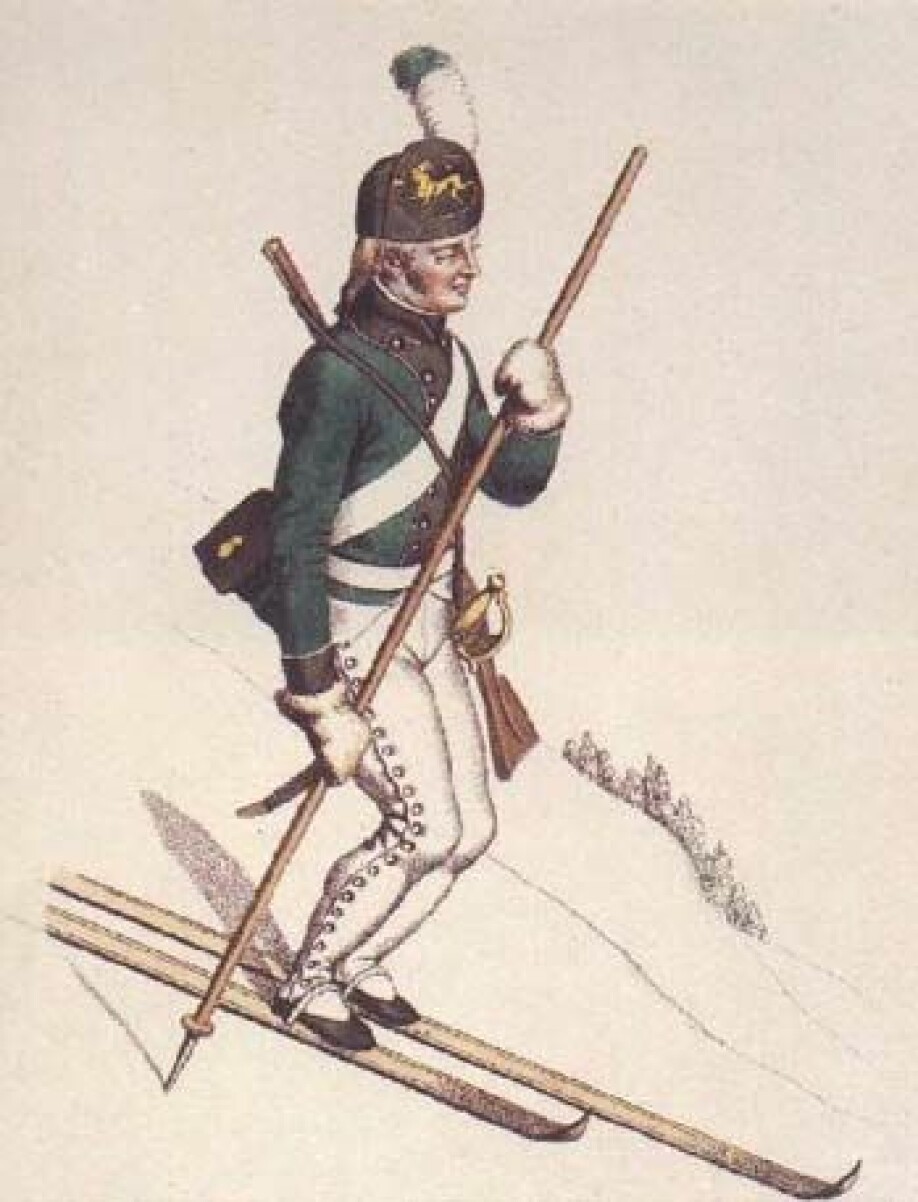
Cross-country skiing and rifle shooting. Biathlon is Norway's secret martial art.
Whenever danger of violent conflict erupted in Norway, biathlon shifted from being purely sport to becoming more of a military activity.
“Today's biathlon has a very close relationship with warfare,” says Glenn-Eilif Solberg. The historian at the Norwegian Sports Academy does research on the early history of what is today one of winter sports' great spectator successes.
It all started with martial arts.
“I was at a conference where we were discussing the expanded concept of martial arts – all types of sports with origins in violence of some kind. Biathlon is Norway's secret martial art,” says Solberg.

He believes orientalism and racism lurk behind how martial arts are defined. Why is karate a martial art but not boxing? There are good arguments for expanding the concept of martial arts to shooting, according to Solberg.
Ski-soldiers in 1767
The first people to receive prizes for biathlon were Norwegian ski-soldiers in 1767. The competition at the time seems to have been more of a downhill race with shooting at high speed. Solberg studies ski-shooting in the sense of cross-country skiing where the athletes stop and shoot.
“We’ve had skier companies back to the 17th century, but after Norway’s 1814 union with Sweden it suddenly became more difficult to argue for the need for a skier company on the border with Sweden. A proposal was made to introduce skiing and shooting as part of Norwegian men's national upbringing at Eidsvoll, where the Norwegian constitution was drawn up. It was voted down, but throughout the 19th century, skiing and shooting increasingly turned into sporting competitions,” he says.
In other words, the events were standardized, simplified and had less and less connection with the military.

When conflicts threatened
“On the other hand, when tendencies towards violent conflict arose, ski-shooting reverted to a more military activity again,” Solberg says.
He points to the governor-general conflict in 1861, the parliamentary crisis in 1884, the consulate issue around the turn of the last century, the First World War and the Second World War.
“An example of the military emphasis is ‘practical shooting’, which was introduced at the end of the 19th century. The shooting is practical in the sense that you learn to kill someone without being killed,” he says.
Practical shooting differs from range shooting in that you shoot at a human-shaped target instead of a round target. In addition, shooters are under time pressure, the logic being that when you’re being shot at, you don’t have time to stand and aim. The shooters used military weapons and firing positions.

Portrayed as hunting
In 1940, the long-distance cross-country ski race Birkebeinerrennet was expanded to include a separate class of field shooting. Before the World Wars, there were also competitions in sports such as patrol races with cars and shooting, marching and shooting, running with shooting, bicycle shooting and rowboat shooting.
“Leading up to biathlon’s return to the Olympic programme in 1960, the official line presented biathlon as having developed from hunting. A professionalized and militarized sport didn’t fit well into the post-war Olympics,” says Solberg. He writes about how ski-shooting was portrayed as stemming from self-rescue with skis, bow and arrow in the Nordic countries.
“The portrayal of biathlon as a civilian, non-violent sport originating in hunting became important for the sport to remain in the Winter Olympics after 1960. This ambivalence is still visible in the IOC and the International Biathlon Union (IBU)", according to the NIH researcher.
Familiar and exciting
Today's Norwegian Biathlon Federation, on the other hand, is well acquainted with the sport’s history and does not try to distance itself from it at all.
“It’s a very exciting story,” says Harri Luchsinger.

The first biathlon president in Norway was Gunnar Giljarhus – a major general and CEO of Raufoss Ammunition Factories. Luchsinger is the current development manager in the Norwegian Biathlon Federation; he is taking his doctorate at NTNU and has published several research articles on the sport.
“Biathletes in Norway today probably don’t give too much thought to the military history. Athletes in Europe, on the other hand, think about it a lot, as they’re often employed by the military,” he says.
Luchsinger describes how the top biathletes in Italy are defence employees, in Germany and Switzerland they are customs officers, and in Poland they are employed in the defence or the police. Biathletes are not primarily seen as a military resource – it's more of a way to organize elite sports.
From modern pentathlon
“I think it’s really exciting that biathlon grew out of the modern pentathlon in the 20th century. Pierre de Coubertin, who created the modern Olympic Games, came up with a pentathlon to test the ultimate soldier,” says Luchsinger.
“There’s no doubt that the founding of IBU in 1993 as the international governing body of biathlon was very important for the sport’s development. That was when the interest gained momentum and the different competition formats were developed,” says Luchsinger.
Translated by: Nancy Bazilchuk
References:
Glenn-Eilif Solberg: En militarisert sport? Skiskytingens tidlige utvikling i Norge (A militarized sport? The early development of biathlon in Norway.) Historisk tidsskrift, March 2021, doi: 10.18261 / issn.1504-2944-2021-01-02
Glenn-Eilif Solberg: Idrettsmann og skytter. En historisk undersøkelse av skiskytingens utvikling og organisering i Norge før 1930 (Athlete and shooter. A historical study of biathlon’s development and organization in Norway before 1930.) Master's thesis, University of Bergen, June 2019.
———































